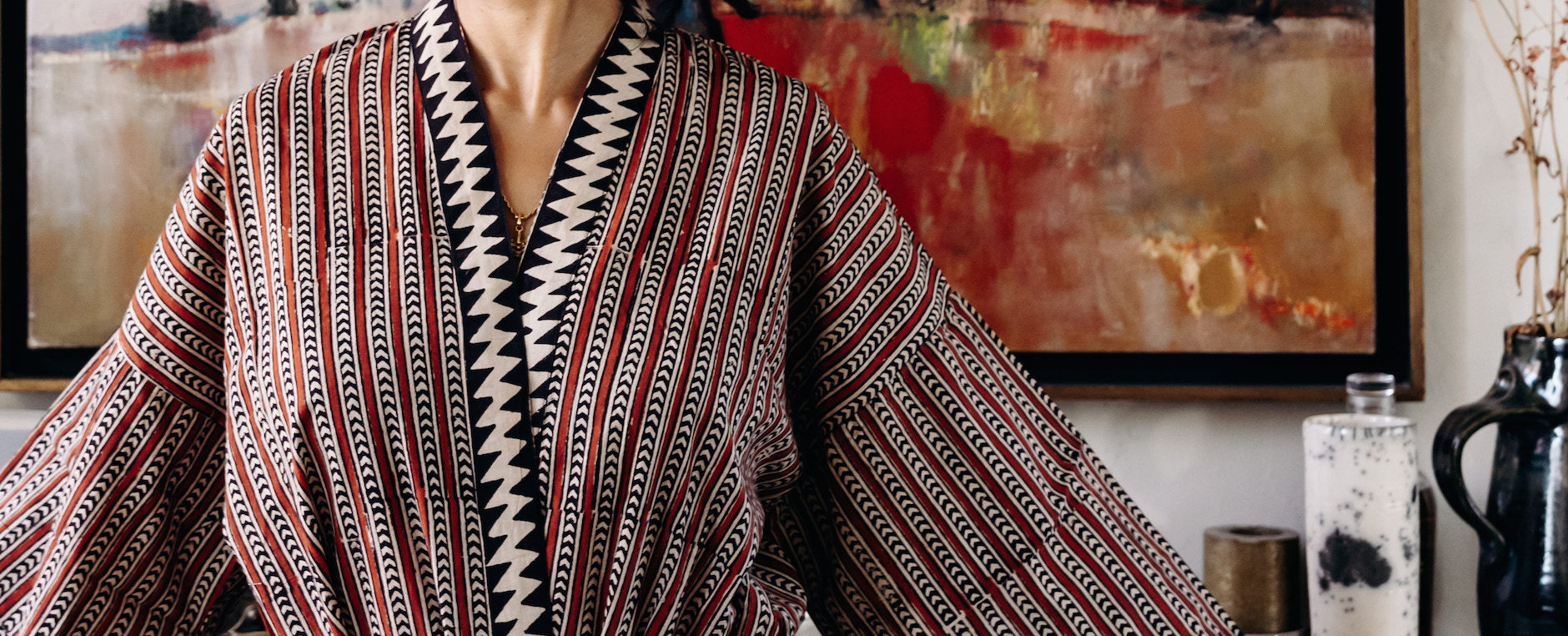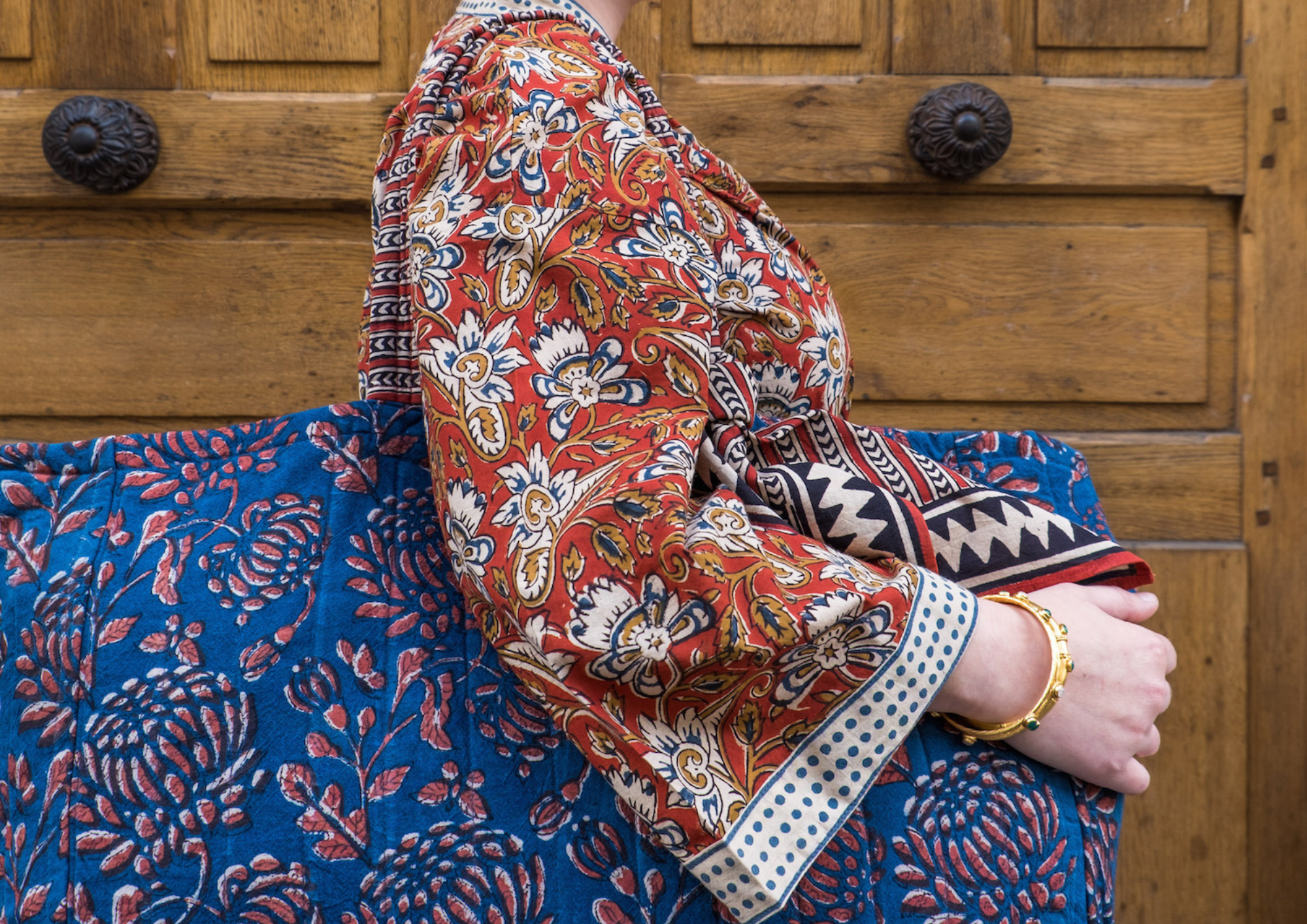Le kimono, entre savoir-faire traditionnel et modernité
C’est le vêtement chic et élégant par excellence, l’incontournable qu’on adore enfiler pour sa douceur qui nous fait sentir bien et confortable : le kimono. Originaire du Japon et issu de son riche patrimoine culturel, ce vêtement d’intérieur est vite devenu un indispensable dans notre garde-robe, à porter seul ou accessoirisé pour une allure boho chic.
Historique et conseils pour porter ce vêtement artisanal, symbole d’un héritage ancestral qui s’inscrit dans l’air du temps.
Kimono indien Rang © Lili in Wonderland - © Blue Ruin1
Kimono indien Lamba © Lili in Wonderland
Histoire et évolutions
Vêtement ancestral japonais, le kimono apparaît au 7ème siècle en la qualité de sous-vêtement et sous le nom de kosode, signifiant littéralement en japonais “chose portée”. Cette pièce en soie avait la forme d’un T et était portée près du corps, sous d’autres couches de vêtements.
À cette époque, le coût d’une robe kimono était très élevé, et seule l’aristocratie avait les moyens d’investir dans des pièces raffinées pour exprimer sa richesse. Ce vêtement d’intérieur répondait à des codes précis permettant de distinguer les castes sociales entre elles, ainsi que le statut marital d’une personne. Il diffèrerait donc en matière de tissus, de couleurs et de motifs.
Le kimono de couleur noire, par exemple, avec des motifs sous la taille est porté par les mères des mariés le jour des noces. Le statut de célibataire est quant à lui symbolisé par des manches plus courtes sur le kimono, qui sont rallongées après le mariage.
Le terme kimono apparaît véritablement à partir du 13ème siècle, en même temps que son port à l’extérieur qui se développe de plus en plus. Au fil des époques, les manches du kimono sont devenues plus longues, et la forme de kimono ample avec une ceinture à nouer -appelée style Obi- s’est imposée comme la plus courante.
© Pinterest - Kimono imprimé en coton Reema © MunaYuuni
Porté aussi bien par les femmes que par les hommes, ce vêtement a été délaissé après le 19ème siècle : avec l’ouverture du commerce aux pays étrangers, les Japonais lui ont pendant un temps préféré les vêtements occidentaux, jugés très élégants et plus modernes. C’est aussi l’instant où le kimono est arrivé chez nous, et a été adopté par les occidentaux !
Revenue en grâce depuis, la tradition du kimono reste bien ancrée dans la culture japonaise, et son artisanat ancestral est préservé.
Kimono en teinture naturelle Chota © Lili in wonderland - © Joshibi Art Museum
© Ephemera - © thekimonogallery.tumblr.com
Comment le porter
Longtemps utilisé comme un vêtement d’intérieur, le kimono est désormais un vêtement à part entière, qui peut aussi se porter en extérieur selon le style souhaité.
Restez cosy à la maison avec un kimono coton porté directement sur la peau, nonchalamment noué à la taille qui invite à la détente. Pour une allure alliant confort et élégance, privilégiez un kimono imprimé avec ceinture intérieure et extérieure.
Pour vos soirées cocooning, vous pouvez porter un kimono indien par-dessus un pyjama en coton imprimé : tenue chic et bohème garantie
Kimono indien Bada © Lili in wonderland - Pyjama fleuri en coton Iris © MunaYuuni
D’humeur plutôt flâneuse ? Le kimono se porte aussi en jolie veste pour donner une touche boho chic à votre tenue. Ceinturé à la taille ou ouvert pour plus de légèreté, il ne vous reste qu’à choisir !
Kimono indien Bada, sac week-end Sundram © MunaYuuni
Source









